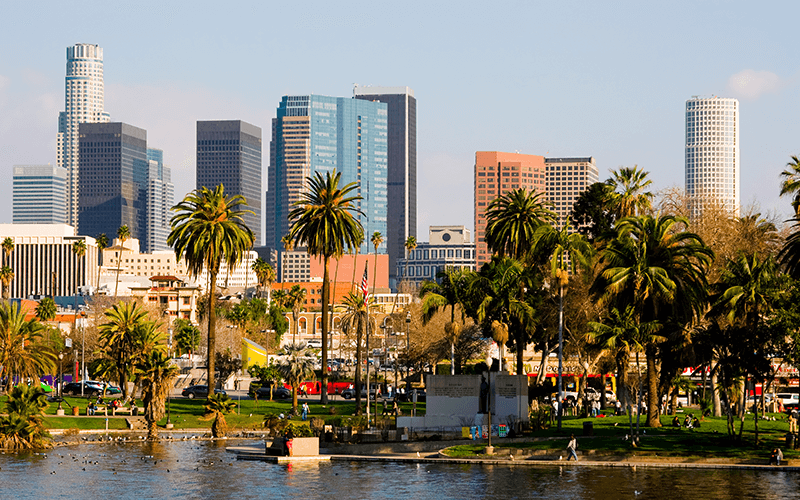To change the framing a bit from Joseph's post, as currently being waged, are there NIMBY/YIMBY battles where we are better off going with the NIMBYs? Yes, frequently, but to see why we have to move past the general (where the ideas are mostly good) to the specific (where terrible choices are routinely prioritized).
First, though, let's get a few things out of the way.
1. This is a post about the debate over urban densification and how to pursue it, not about other not-in-my-back-yard issues like public transportation and housing for the homeless where I am considerably more YIMBY than the YIMBYs.
2. All reasonable people agree on the need to build more housing (and productive conversations don't spend time on the fringes). To paraphrase Shaw, we've established that; now we're just haggling over the locations.
3. YIMBYism is a movement, not an organization or a political platform, so there's always a danger of overgeneralizing. I tend to rely on Vox's David Roberts and NYT's Farhad Manjoo and recently Paul Krugman as representative examples, but there are other self-identified YIMBYs such as Noah Smith who take a very different approach and with whom (particularly in the case of Smith) I find it much more difficult to argue.
4. I'm putting aside discussion of SB-50. A crappy bill that misses being a very good one by a small margin (partially because of the factors we'll be going through in this post). Too much to cover here, but a possible topic for next time.
5. I'm also putting aside any discussion of the massively complex issue of gentrification except to say I'm sympathetic to the NIMBYs of Boyle Heights and Watts and similar neighborhoods that always seem to bear the brunt when we try a new experiment in urban planning.
Much of the discussion on densification seems to take a curiously late 19th century view of this early 21st century problem. The live across the street from your job model works best with a single breadwinner working for the same company in the same spot cradle to grave. In age of multi-income families, frequent job changes, mergers/acquisitions/reorgs, multi-hub metro areas, and telecommuting, this view is dangerously antiquated.
A popular alternative framing views the problem through the lens of supply and demand. Just deregulate and let the magic of the market solve the problem for us. This approach sounds more sophisticated though it’s not. It ignores a misalignment that undercuts the whole-- but I’m getting ahead of myself.
What if, instead of job proximity, we approached it as a question of job access? Here’s the metric I’m using to get a handle on the problem: Development locations should be judged on the number and quality of jobs (and to a lesser extent, schools, shopping, cultural opportunities, etc.) accessible on foot or by bike/micromobility or public transportation in less than an hour. (If I hadn't decided not to talk about it, I'd mention SB-50 incorporated some of these ideas but didn't take them far enough.)
This metric suggests a few basic rules. Here are the three main ones:
1. Locations should be centrally located in a high population area. Important to think in terms of traditional and electric bikes, as well as other micromobility options in addition to public transportation (particularly buses). The object is to have access to the widest possible range of jobs, shops, schools, etc. Sites cut off in one direction by mountains or large bodies of water are always sub-optimal.
2. And well served by EXISTING public transportation. Ideally within walking distance of a major hub like Union Station. Failing that, directly connected to one of these hubs by rail or rapid bus lines. Think North Hollywood. Particularly if not served by a good metro line, it needs a good selection of reasonably high frequency bus routes going north, south, east and west. Think Echo Park.
3 Given the costs and carbon footprint of construction, we should avoid sites that are viable now but which probably won’t be in the near future.
a. For coastal cities, elevation should be at least twenty feet. For areas prone to storm surges (pretty much everywhere back East), add another twenty feet to that. Given the economic and environmental costs of building and demolishing large structures, it makes no sense to put them in locations that will be underwater by 2050.
3b. For cities in the West, areas with high risk of megafires should be avoided. In addition to the obvious importance of not putting people in harms way, keeping housing out of burn zones makes essential controlled and managed burns easier. At the very least, we shouldn't have policies that encourage development in Western wildland-urban interfaces.
4. Money matters. Developable land matters. Constraints matter. Magnitude matters. None of the distributions are uniform. The costs of increasing density by, say, a couple of thousand people per square mile varies wildly from town to town and neighborhood to neighborhood.
This is probably a good stopping point. Lots more to come in this thread, but I’d like to let these points sit with you for a while before we move from what we should be doing to what we actually are.








